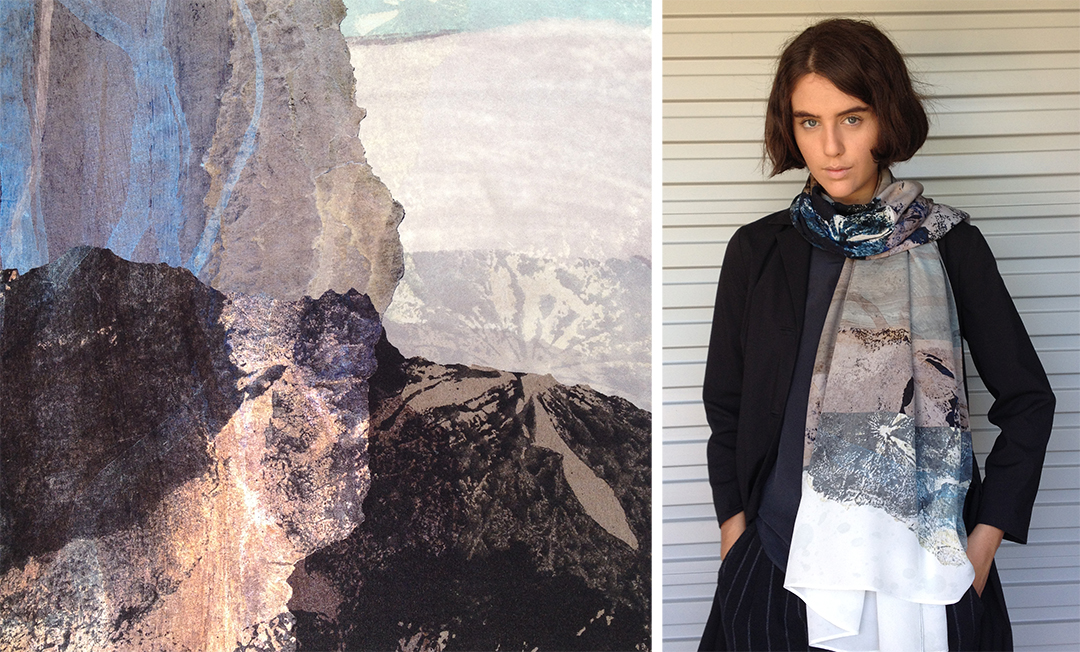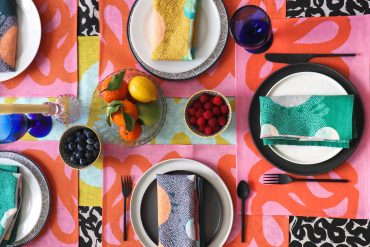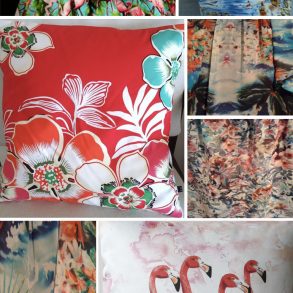It is always such a joy to hear from designers we’ve featured in the past and see what new and wonderful things they are up to. Vivien Haley has graced the Pattern Observer blog twice in the past (here and here) and we couldn’t wait to share her latest collection, “Elementa” with you. Drooling over these amazing textures!
Vivien writes, “Elementa was created from my observations of nature and landscape where I live on the south coast of Sydney. My awareness of the forces of nature, that effect the change of colours and atmospherics of the landscape. The particular plants I used for the scarf designs are not indigenous to this area, but rather introduced plants, that have made their own sense of place in the Australian landscape.
The Nasturtium grows wild everywhere, and enlarging the motif, using dusky pinks, blue and indigo, it has created the feel of a landscape at dusk. The mono print method, transfers the delicacy of the leaves and plants, onto paper beautifully. By painting the leaves and printing onto the paper directly, a variety of images from strong to delicate are created, depending on how much paint is applied, and whether you print the leaf once or twice.
The Acanthus leaf when enlarged, and printed in the same way, has taken on the feel of a dark mountain. With the addition of water colour marks, and block prints onto paper, the effect is of water pools and shadows in the forest. The dark restrained colours add to the mood.
However, the Hibiscus flower is thought of as being bold and bright, but when found on the ground in a state of decay, loses its colour. The painting of the petals and printing on to paper, is like a memory, and adds to the fragility of the motif.
All of the art work for the Elementa range is created by hand, as I work more as an artist, than a designer. The different components are then scanned, and recreated on the computer. This results in complex and creative designs that have the clarity of the original artwork.
When working on a collection, one of the most important factors is to employ the technique that really helps create the feel of the design.”
Learn more about Vivien’s work at www.vivienhaley.com.
















